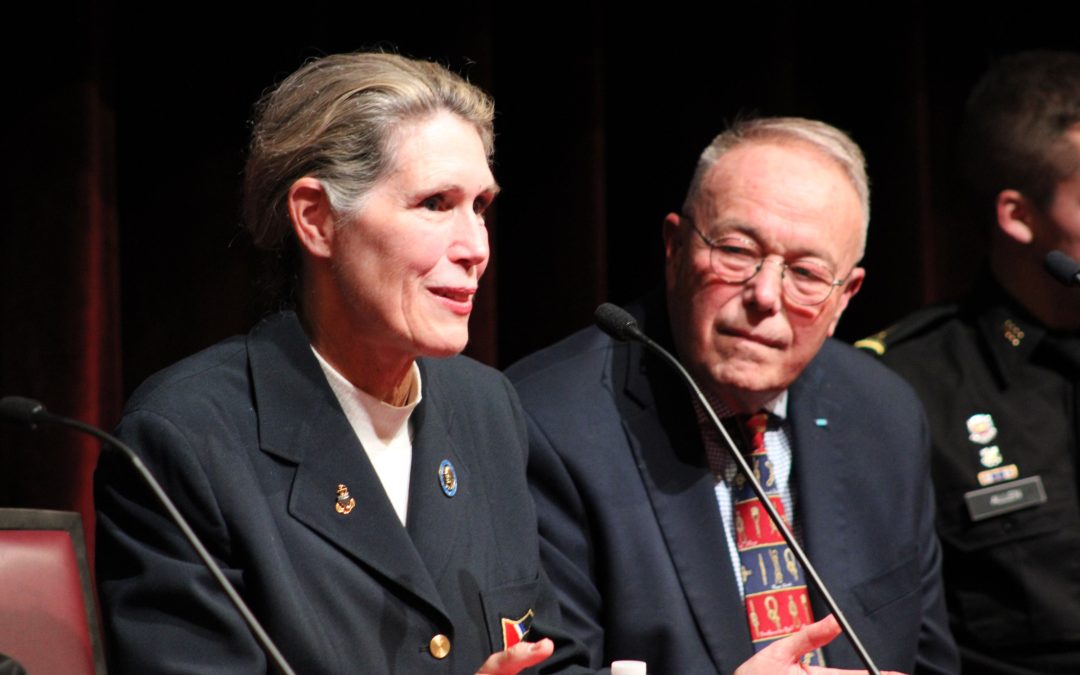Leading with Character: Your Life Story
If you read my blogs or listen to my leadership talks, you know I advocate for lifelong learning. One of my favorite methods is tuning in to informative podcasts while driving down the highway or slogging away on the elliptical. The Hidden Brain podcast by Shankar Vedantam is one of the most intriguing and informative.
During a recent drive up to Norwich University in Vermont, where I joined Coast Guard Rear Admiral (retired) Rich Schneider in speaking with the corps of cadets about leadership, I listened to the episode “Change Your Story; Change Your Life” with psychologist Jonathan Adler: https://hiddenbrain.org/podcast/healing-2-0-change-your-story-change-your-life/ I highly recommend the podcast, and particularly this episode that informs us how we can tell our life stories in ways that enhance our wellbeing. My main takeaway is the premise that an individual is not just the main character of their life story, but also the narrator. As such, they can choose to tell their story, regardless of the challenges and obstacles faced, from a perspective that fosters well-being instead of reinforcing trauma.
An Active Participant versus a Passive Observer
Choosing to tell one’s life story from a healthy perspective requires being an active participant who takes the initiative to shape outcomes instead of reacting to what happens. That involves reflecting back on one’s life to revisit experiences. I engaged in this practice in earnest while writing my book on character-centered leadership, Breaking Ice & Breaking Glass: Leading in Uncharted Waters. In the book, I draw upon my 40 years in uniform with the US Coast Guard to share leadership lessons to help others achieve their full potential.
Surprisingly, memories of some of my most arduous, challenging life experiences differ significantly from my journal entries during those times. For instance, when thinking back to my first command position, as commanding officer of the icebreaking tugboat Katmai Bay stationed in Sault Ste. Marie, Michigan, all the positive memories flood to the forefront of my mind. It was such an honor and privilege to command a ship and lead a crew of 17 as a junior officer. How fun and exciting to break the ice for 1000-foot iron ore carriers delivering their loads of taconite from the hills of Wisconsin across Lake Superior and down the rivers to the steel factories in Indiana. What a worthy mission and purpose!
Perception versus Reality
Thinking back, I remembered all the positive aspects of those two wonderful, fulfilling years. It was only when I pulled out my journal 30 years later and started reading that I realized I’d created a life story that was far different from the recorded facts and perceptions. My journal entries reflect the physical, mental, and emotional exhaustion I faced during those years. It was tough being the first woman to command a ship on the Great Lakes, working hard to not only successfully execute my challenging missions, but to prove myself time and again—especially to my supervisor, who didn’t think a woman belonged in command. I had my resignation letter written, but not signed, while at my lowest.
An Unexpected Ally
I lost focus because I’d been too passive in allowing factors I couldn’t control—like my supervisor’s harassment—to dominate my psyche. It was only toward the end of my tour of duty that I reached inside to draw upon my personal agency to actively shape my fate, to look at the bigger picture, and thus restore my well-being. My window of opportunity opened when one of my subordinates stood up for me as an ally to challenge my supervisor (in private) on how he was treating me. I was unaware of my subordinate’s selfless action until years later, but noticed my supervisor eased up on me. Not long after, he retired from the Service. It was a wake-up call that I had contemplated quitting when I just needed to open my toolbox to seek an ally or remind myself, “this too shall pass.” That experience shaped me to be a better leader.
Using tools to actively engage and shape outcomes enables us write a fulfilling life story we can reflect back on and narrate from a positive perspective that helps us identify as victors not victims. Doing so benefits not only the author/narrator, but everyone in his or her circle.
Look in the mirror: What tools can you draw upon to write your life story in a manner that promotes healing and well-being?
Please join me again next week for more on Leading with Character.
If you enjoyed this post, please visit my website where you can buy my book, Breaking Ice & Breaking Glass: Leading in Uncharted Waters, and sign up for my mailing list: https://sandrastosz.com/book/breaking-ice-and-breaking-glass/



